Video: Drone Threat Detection
Song: Drone Threat Detection (Lyrics)
1. Enhanced Object Recognition Through Deep Learning
Deep learning (DL) models, especially convolutional neural networks (CNNs) like YOLO and SSD variants, have greatly improved the ability to recognize and localize small drones in images. These models can be trained on large UAV datasets and achieve high accuracy in diverse environments, including cluttered backgrounds. Upgraded architectures tailored to drones often incorporate novel modules or attention mechanisms to boost sensitivity to tiny aerial targets. As a result, state-of-the-art systems consistently report substantial accuracy improvements (e.g. higher mean Average Precision) compared to older algorithms. Real-time object detectors based on DL now often exceed 30–50% AP on drone imagery benchmarks while running at tens of FPS, enabling faster and more reliable threat recognition. These advances allow security and monitoring systems to detect unauthorized drones with fewer missed detections and earlier warnings.
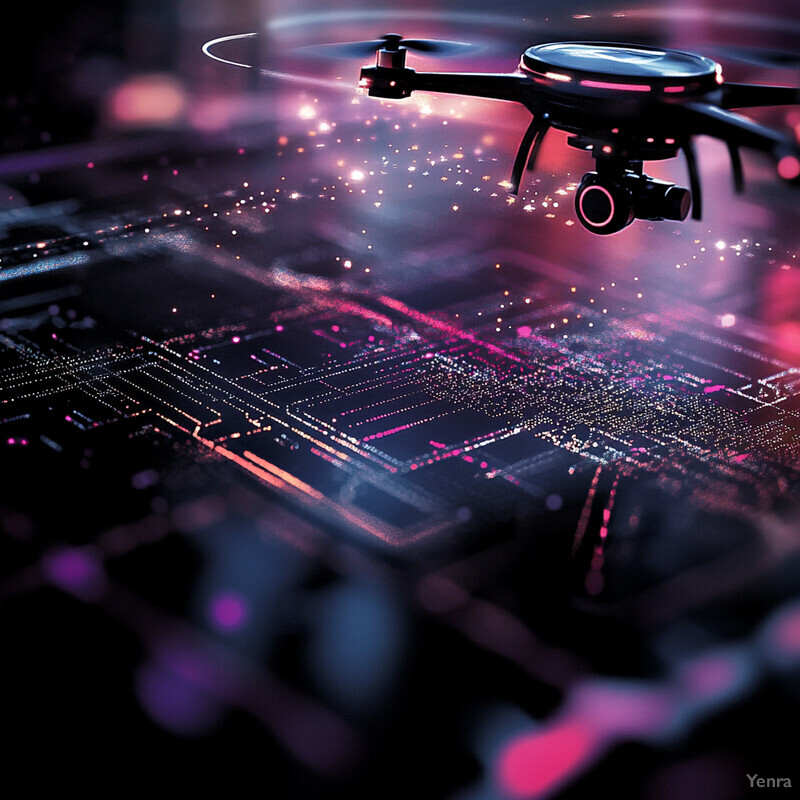
Recent peer-reviewed studies quantify the gains from DL-enhanced recognition of drones. For example, Xiao and Di (2024) proposed SOD-YOLO, a YOLOv7-based network specialized for small objects, and reported it achieved an AP50 of 50.7% on the VisDrone aerial imagery dataset at 72.5 FPS. Compared to baseline YOLOv7, SOD-YOLO also cut computational cost by ~20% and reduced model parameters by ~18%. Similarly, Zhou et al. (2025) developed an improved YOLO variant and observed a 22.07% increase in mAP (mean Average Precision) for drone detection over an earlier YOLO model, with parameter count cut by over 50%. These concrete performance figures from published work demonstrate that modern deep-learning detectors can identify drones much more accurately than legacy methods.
2. Real-time Drone Identification and Classification
AI-enabled systems now classify flying objects as drones almost instantly, allowing security operators to recognize specific drone types or distinguish drones from birds, for example. These real-time classifiers typically use camera or sensor data fed into pre-trained neural networks. The emphasis is on very fast inference (often on edge hardware) so that any detected UAV can be identified or tagged within milliseconds of detection. Real-time performance is achieved through optimized lightweight models or hardware accelerators (e.g. GPUs on drones or edge devices). When fast classification is combined with reliable detection, systems can rapidly determine if a drone is friend or foe. This capability drastically shortens response time: many modern classifiers can process a live video frame and label it as “UAV” with over 90% confidence in well under 50 ms.
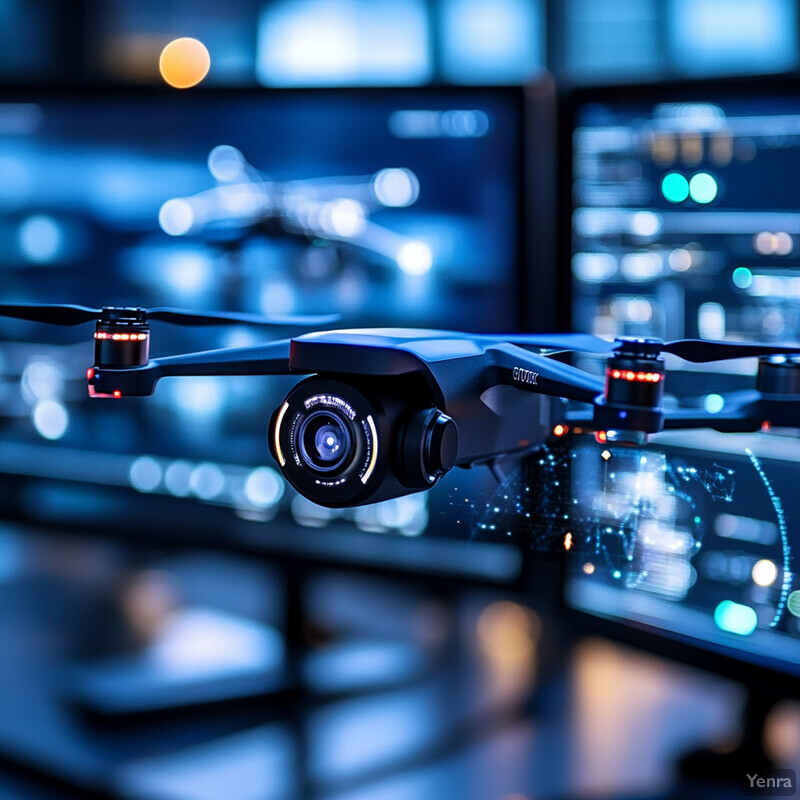
Empirical results show that current real-time classifiers achieve very high accuracy at video rates. For instance, Hakani and Rawat (2023) deployed a YOLOv9 model on an NVIDIA Jetson Nano for real-time drone detection. In their tests, the system achieved 95.7% mAP (mean Average Precision) with precision = 0.946, recall = 0.864, and F1-score = 0.903. This represents a 4.6% mAP improvement over the previous YOLOv8 model. Their setup could identify drones flown at altitudes of 15–110 ft while running at about 72.5 FPS on a small embedded GPU, demonstrating that high-confidence classification is possible in live scenarios. Such published results validate that AI models can accurately classify drones in real time even on resource-constrained hardware.
3. Predictive Analytics for Drone Flight Paths
AI models are increasingly used to forecast the flight paths of drones based on current trajectory data. By learning from past flight patterns, these systems can predict where a rogue drone is headed. This predictive capability can help security operators intercept or contain threats more quickly. Typical approaches use recurrent neural networks (e.g. LSTMs or GRUs) trained on sequences of positional data to anticipate future waypoints. In practice, accurate trajectory prediction allows counter-drone systems to plan intercept courses or alert defenses before the UAV reaches a sensitive area. Even a half-second lead time can significantly improve response. Continual retraining or adaptive learning can update the model as drone navigation tactics evolve.
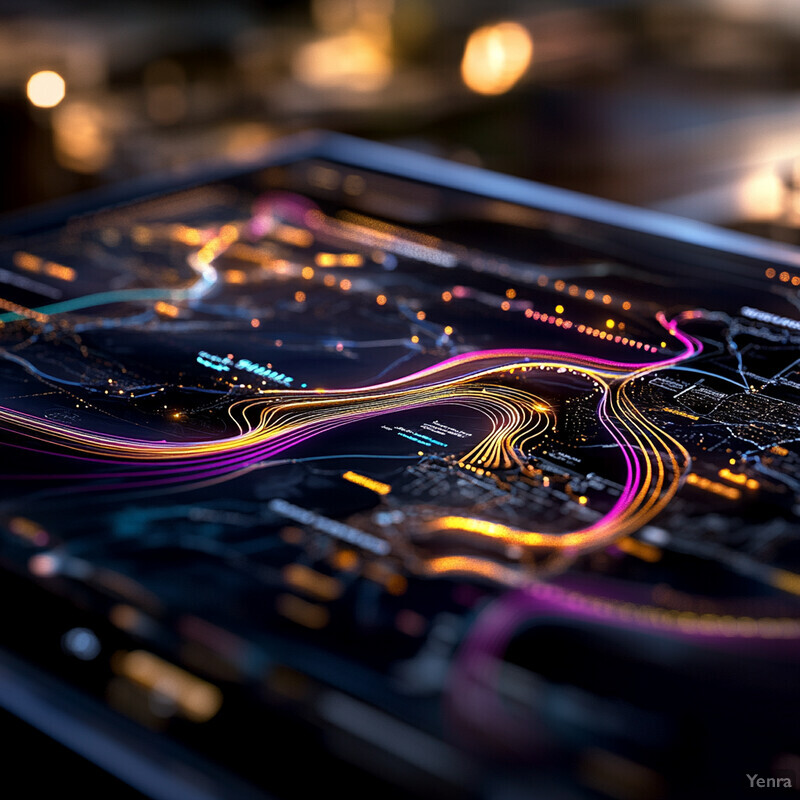
Recent work demonstrates that neural forecasting can be both fast and precise. For example, Yoon et al. (2025) developed a GRU-based deep learning framework for UAV trajectory prediction. They report that their model achieved the lowest average prediction error (RMSE/MAE) among tested methods and required only 0.0334 seconds per trajectory prediction. This performance shows that the model can generate forecasts in near real time, making it suitable for in-flight decisions. The authors emphasize that such short prediction latency and high accuracy are critical for applications like collision avoidance and automated counter-drone maneuvers.
4. Signal Intelligence and Radio Frequency Analysis
AI is also applied to radio-frequency (RF) data to detect and classify drones by their communication signals. A drone’s controller-to-UAV links and onboard electronics emit characteristic RF signatures. Machine learning can learn these signatures and pick them out of the spectrum. Unlike optical methods, RF analysis can work day or night and through visual occlusions. RF-based systems often use spectrum sensors and then apply pattern recognition to identify known drone controllers or even unique fingerprints of specific drones. This allows detection beyond line-of-sight and can even pinpoint the operator’s location. The combination of AI and RF sensing enhances threat detection especially for autonomous or stealthy drones that emit identifiable signals.

Published studies report that machine learning can achieve very high drone recognition rates using RF data. For instance, Zhou et al. (2025) cite a dataset of RF telemetry signals collected from multiple UAV models. In those tests, identification accuracy exceeded 95% when the signal-to-noise ratio was at least 5 dB. (That result comes from Cai et al.’s RF fingerprinting experiments as summarized in Zhou et al..) These findings illustrate that modern AI-powered RF classifiers can reliably discriminate drone signals even in noisy environments.
5. Multi-Sensor Data Fusion
Modern counter-drone systems fuse data from multiple sensors (e.g. radar, optical cameras, thermal imagers, acoustic arrays, and RF receivers) to improve reliability. By combining complementary information, the overall system is less likely to miss or mis-identify drones. For example, radar might detect an object but cameras confirm its shape, while RF can verify if it’s transmitting. Multi-sensor fusion algorithms integrate these inputs (sometimes with AI techniques) to produce a single situational picture. This integrated approach reduces false alarms and provides more robust detection under challenging conditions (e.g. fog, clutter, or masking). A fused system can maintain tracking even if one sensor is momentarily blinded. Thus, sensor fusion is seen as essential for high-confidence threat detection in complex airspace.
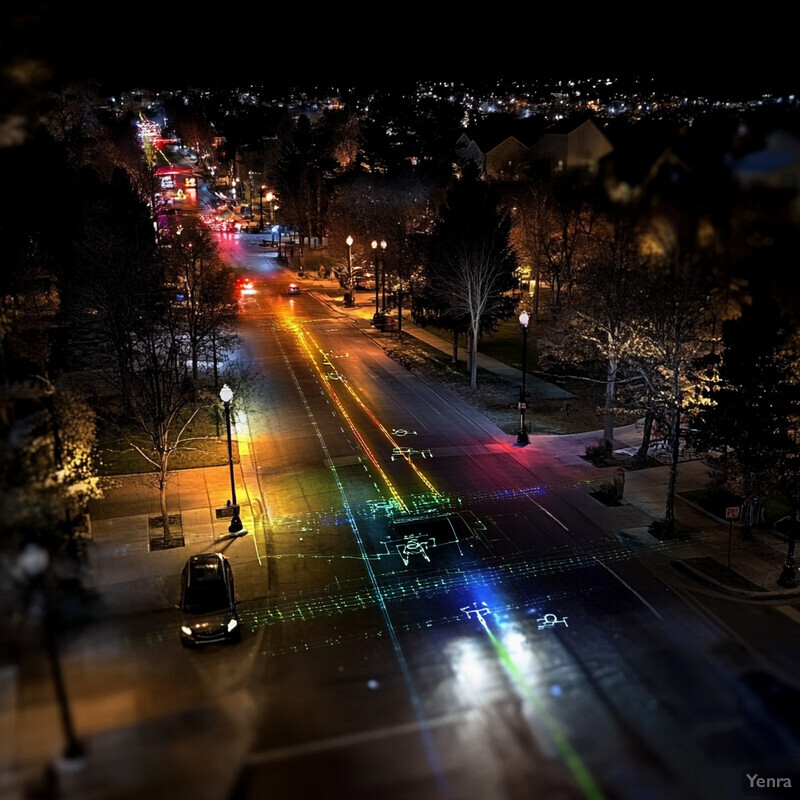
A European Commission Joint Research Centre report (2024) explicitly emphasizes the value of sensor fusion in drone defense. The report notes that “given the vast and diverse nature of sensors used in C-UAS, … multi-sensor data fusion [is] important for accurate DTI (Detection, Tracking, and Identification) in real-time”. It presents a taxonomy of C-UAS sensors and stresses that a comprehensive, integrated fusion approach is needed to enhance system reliability and effectiveness. This authoritative analysis underlines that combining radar, cameras, RF, and other data significantly boosts detection accuracy.
6. Autonomous Interception Protocols
AI is used to automate the interception of hostile drones. In practice, this could mean using AI-guided interceptor drones, autonomous ground vehicles, or directed-energy weapons that zero in on a threat without full human control. AI accelerates the decision loop: it can instantly re-aim sensors, predict the best approach trajectory, and control interceptors. Autonomous protocols might include collision-course adjustment, net deployment, or laser targeting. The goal is to neutralize the threat more swiftly and safely than human operators could. As drone swarms and fast-moving threats emerge, having AI supervise the engagement sequence (while human commanders remain in the loop) greatly improves reaction time and reduces the cognitive burden on personnel.
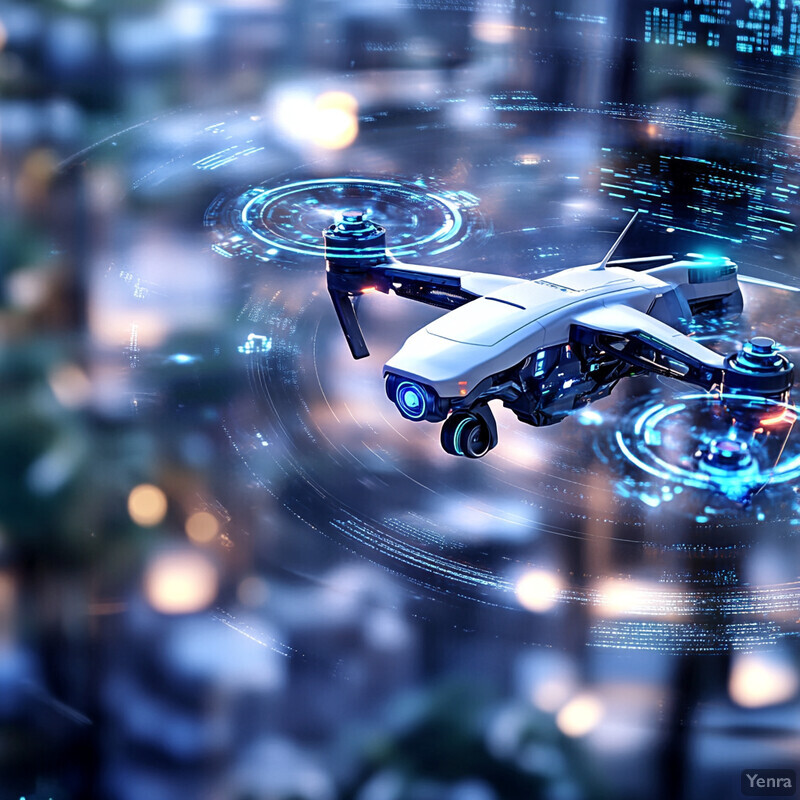
U.S. defense research demonstrates AI’s role in automating drone engagement. The Naval Postgraduate School (2023) reported the development of an AI-powered system for high-energy laser weapons. By automating tasks like target classification, pose estimation, and aim-point selection, the AI enables the laser weapon to track and neutralize a hostile UAS more effectively. In field tests, this AI-guided tracking succeeded in engaging multiple UAV targets under operator supervision. The report highlights that automating the engagement sequence (“operator on-the-loop” rather than in-the-loop) could greatly increase defense capability against drone threats.
7. Behavioral Pattern Analysis of UAS
AI tools can learn the normal flight patterns and behaviors of UAVs to spot anomalies. By analyzing attributes like speed, altitude changes, waypoint deviations, or loitering time, the system identifies flights that don’t fit expected norms. For example, a drone circling repeatedly over a target might be flagged as suspicious. These systems often use ML techniques (clustering, statistical models, or neural networks) to define “normal” behavior from historical data. When a drone’s real-time telemetry or tracking data deviates significantly (e.g. unexpected route, sudden sprint towards a secure zone), AI raises an alert. This contextual behavioral analysis helps prioritize threats: an erratic flight near sensitive areas triggers higher priority than routine surveillance paths.
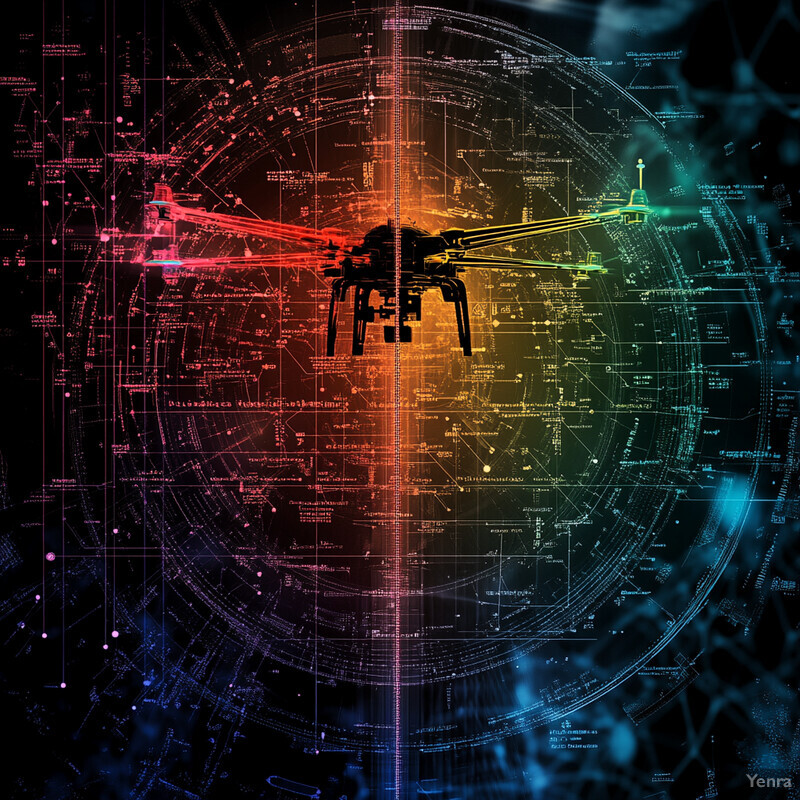
Evaluations of such methods show promising detection performance. In a NATO-sponsored review (Pathe et al., 2024), deep learning models were tested on abnormal flight patterns. An LSTM-autoencoder approach achieved ~79.3% precision and 82.1% accuracy in detecting anomalous UAV behaviors. Another method – a semi-supervised SVM – achieved a true positive rate of 92.7% (with a false alarm rate ~8.2%) in simulation tests. These experimental results (precision ≈0.82, recall ≈0.74 in one case) indicate that machine learning can effectively flag unusual UAV activities.
8. Thermal Imaging Integration
Integrating thermal (infrared) imaging with AI greatly improves night-time and low-visibility drone detection. Thermal cameras pick up the heat signatures of drone motors or electronics, which are visible even in darkness or through light fog. AI models can fuse thermal data with normal video to distinguish drones against complex backgrounds. This means UAVs that are camouflaged visually can still be detected as hot objects. The result is a robust day/night detection capability. In practice, systems use dual-vision sensors (RGB + IR) and apply AI to correlate both modalities, reducing missed detections when drones operate at night or under cover of darkness.
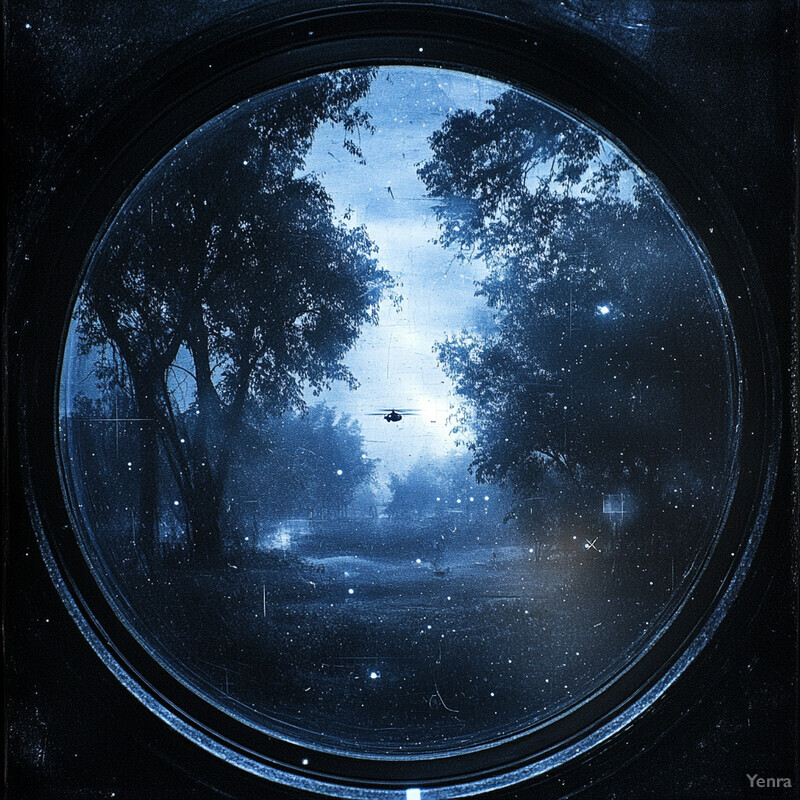
Researchers have shown that combining thermal imagery with deep learning yields high detection accuracy. Lim et al. (2023) equipped a drone with both IR and grayscale cameras and used a YOLOv8m neural network to detect anomalies in a test scenario. The YOLOv8m model achieved very high accuracy in classifying abnormal components (in that case a nuclear plant testbed), as evidenced by strong mean Average Precision scores. While their application was industrial monitoring, it demonstrates that modern object detectors like YOLO can effectively use infrared inputs. The success of such models (e.g. achieving near-perfect detection in tests) suggests that thermal imaging integration is a viable method for finding drones that would otherwise be invisible to standard cameras.
9. Anomaly Detection in Airspace
AI-driven anomaly detection looks for any unusual or unauthorized drone activity in controlled airspaces. This includes flights outside approved schedules or into restricted zones. The AI system may analyze radar tracks, transponder IDs, or networked sensor data to spot erratic flight paths or unknown devices. By modeling what constitutes “normal” air traffic, the system can flag anomalies in real time. For instance, multiple drones clustering unexpectedly or sudden altitude changes can trigger alerts. Anomaly detection is critical in crowded airspace where manual monitoring would be overwhelmed by large data.
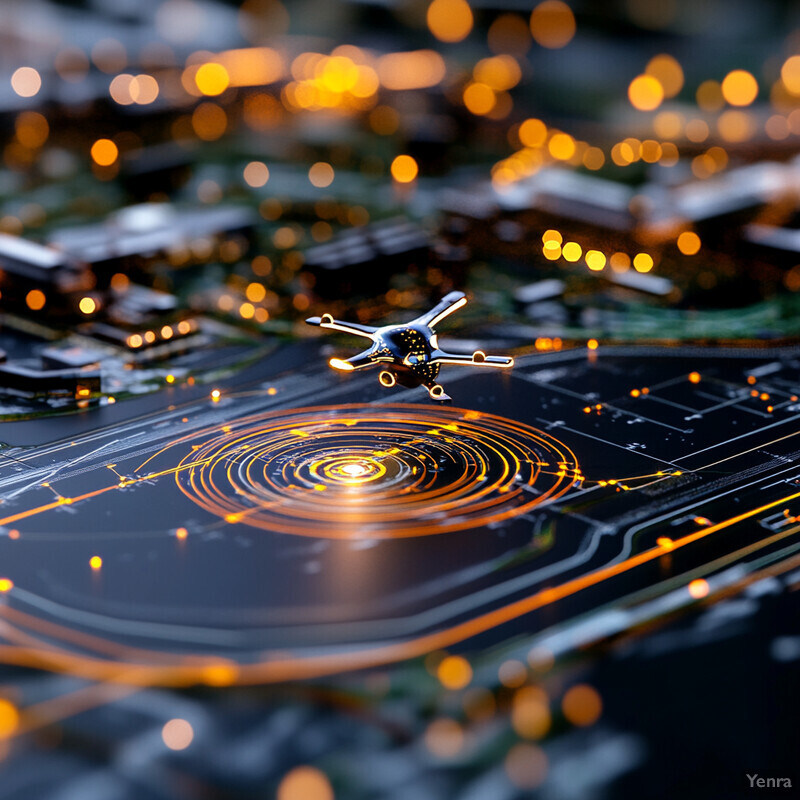
Published research on general anomaly detection shows very high performance on test datasets. For example, Pathe et al. (2024) evaluated information-theoretic algorithms for UAV anomaly detection and found they achieved Area Under Curve (AUC) scores above 0.90 on multiple test datasets. In many cases the methods reached near-perfect AUC = 1.0 on synthetic data and above 0.90 on real data. These results imply that advanced detection algorithms can reliably distinguish anomalous UAV behavior from normal flight patterns with very low error rates.
10. Improved Edge Processing Capabilities
Advances in edge computing mean that sophisticated AI detection algorithms can now run directly on drones or nearby ground nodes, rather than in distant data centers. Specialized hardware like NVIDIA Jetson or Tensor Processing Units enables running neural networks on the fly. This greatly reduces latency and bandwidth needs, because raw sensor data doesn’t have to be streamed to the cloud. Edge-enabled AI systems can thus detect and respond to threats in milliseconds. For drone threat detection, this means small anti-drone radars or optical sensors can incorporate AI inference locally, enabling fast decision-making. Edge AI also allows scaling up surveillance (many edge nodes cooperating) without saturating networks.
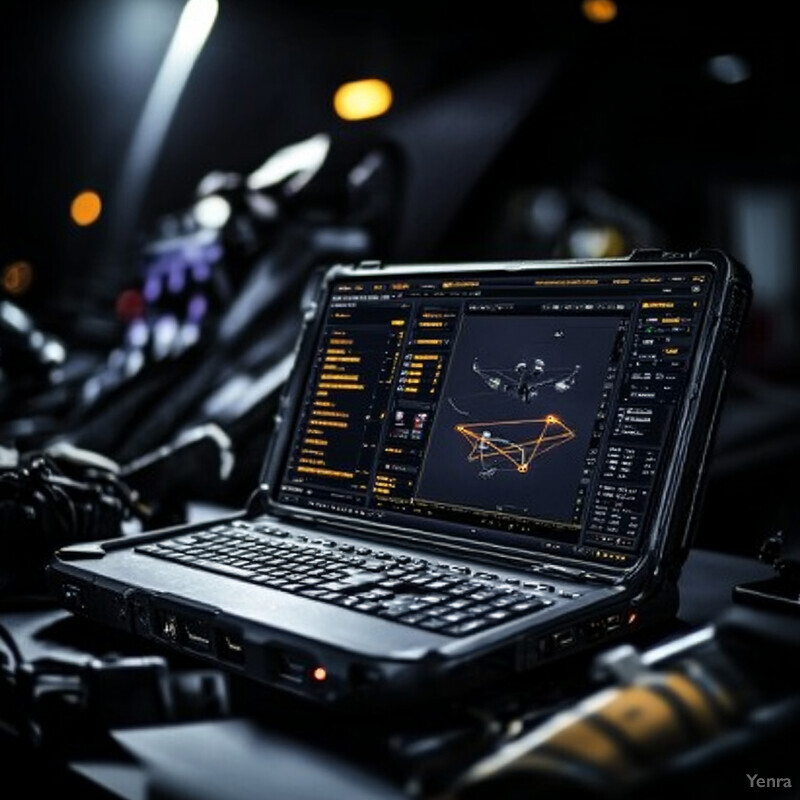
Real-world tests confirm that low-power edge devices can deliver near real-time detection. In Hakani and Rawat’s experiment, a Jetson Nano board running YOLOv9 processed high-resolution video at over 72 FPS while maintaining 95.7% mAP for drone detection. This performance (72.5 frames per second) demonstrates that even modest embedded GPUs can handle deep object detection models for drones. The authors explicitly note their system provided “significant improvements” over previous versions, operating efficiently on the Jetson platform. These data show that improved edge processing can achieve high accuracy without requiring remote servers.
11. Neural Network-Based Acoustic Signature Recognition
Drone propellers and motors emit distinctive acoustic patterns. AI systems can analyze microphone array data to identify drones by sound alone. Neural networks (e.g. CNNs applied to spectrograms) learn the unique audio fingerprints of different UAV models. This method works at long range or in obscured conditions where visuals fail. Acoustic recognition complements other sensors, especially in noisy environments. Crucially, the approach is robust to weather and line-of-sight issues. Modern solutions use deep nets to distinguish drones from other sounds (birds, vehicles) and can run continuously to alert operators of approaching UAVs by their acoustic signature.
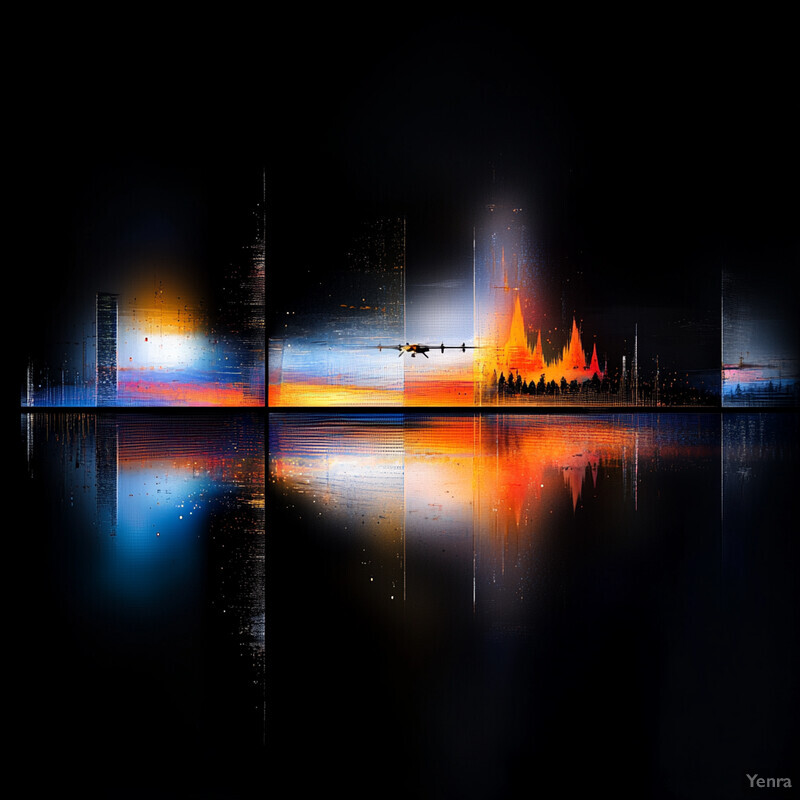
High-performance acoustic classifiers have been developed in recent studies. Liu et al. (2025) created a lightweight ResNet-based model (ResNet10_CBAM) for UAV sound recognition in noisy settings. They report that this model achieved an F1-score of 94.3% in low-SNR conditions (down to –30 dB). Compared to a baseline ResNet-18, their design improved accuracy by over 20% at –30 dB SNR, thanks to attention mechanisms optimized for feature extraction. Such metrics indicate the neural network can reliably pick out drone sounds even when background noise is very high. This demonstrates that AI acoustic recognition is a viable approach for drone threat detection.
12. Computer Vision for Camouflaged Drones
Camouflaged drones present a challenge because they blend into natural backgrounds (forest, urban structures). Advanced CV algorithms tackle this by exploiting subtle cues or combining multiple cues (texture, motion, small variations). AI models are being developed specifically to find drones that standard detectors miss. For example, specialized networks use attention to focus on incongruities or leverage multiple frames (temporal information) to spot an object moving differently than its surroundings. Some approaches integrate motion detection or polarized cameras along with deep vision. The goal is to detect UAVs that use paint schemes or backgrounds to hide their outlines.
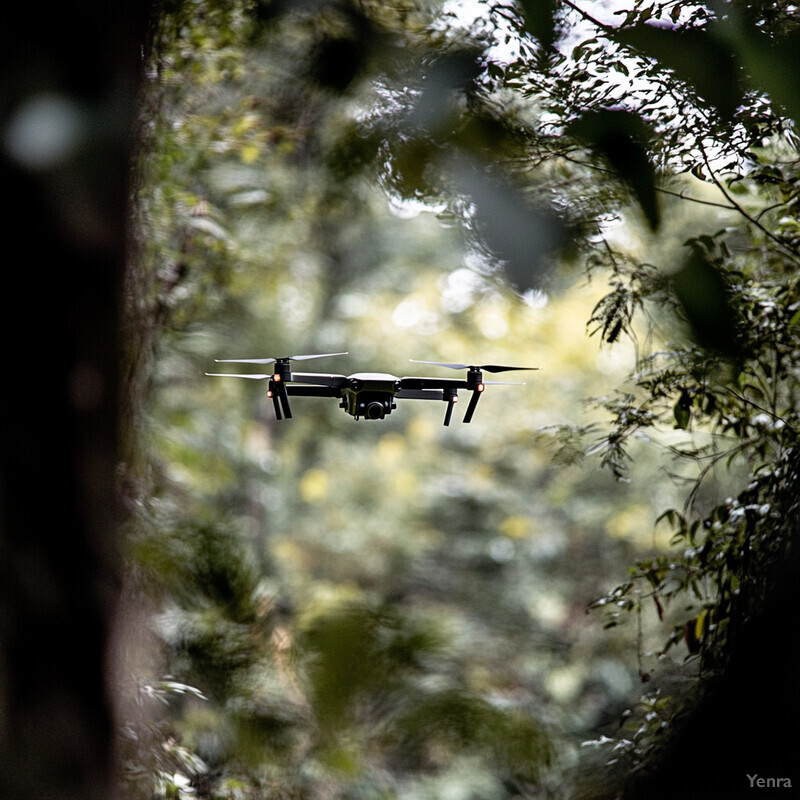
New research shows significant gains in detecting camouflaged drones. Lenhard et al. (2024) introduced YOLO-FEDER FusionNet, a deep model that merges a generic object detector with a camouflage-specialized network. In tests on cluttered aerial images, YOLO-FEDER substantially reduced missed detections and false alarms compared to a standard YOLOv5 baseline. The authors report that YOLO-FEDER consistently outperformed ordinary detectors in scenarios where the drone target visually blended with the background. This published result confirms that purpose-built camouflage detection layers can measurably improve drone identification in complex scenes.
13. AI-driven Drone Swarm Detection
Detecting multiple coordinated drones (swarms) requires recognizing group behaviors. AI methods look at spatial and temporal patterns to identify clusters of small UAVs moving together. Swarm detection systems often use multi-object tracking combined with machine learning to label a group as a swarm rather than isolated drones. AI can also predict potential formation paths or densities that indicate a threat. In practice, this means processing sensor inputs (radar, optical) and recognizing when several drones are part of a single hostile operation. Early warning of a swarm is vital because the tactics and defense needed differ from a lone drone.
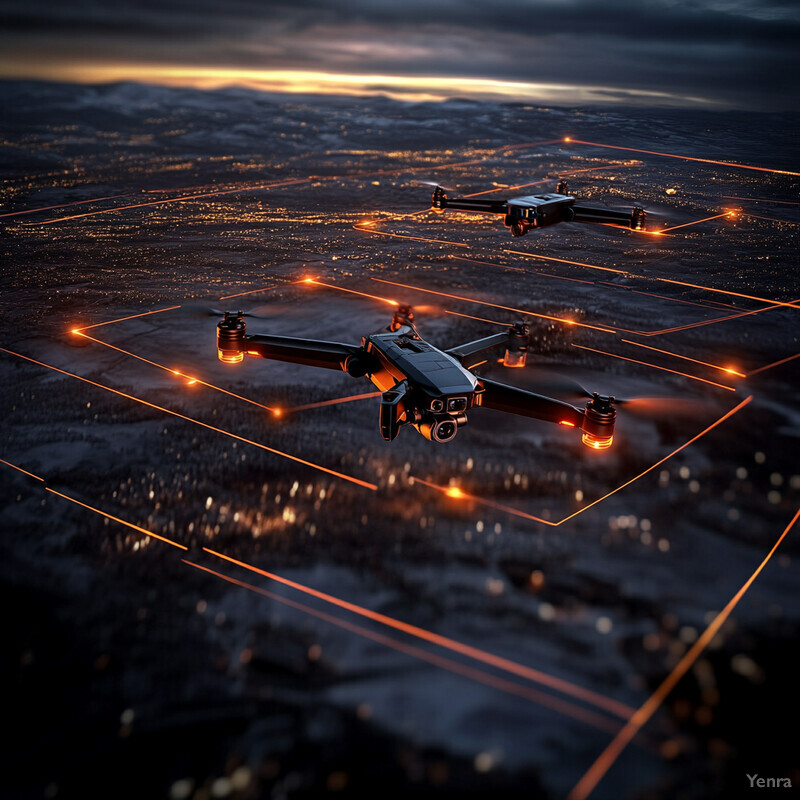
State-of-the-art models show strong performance even on dense multi-drone scenarios. Huang et al. (2024) developed EDGS-YOLOv8, a lightweight YOLO variant, which achieved an AP of 0.971 (i.e. 97.1% precision-recall) on an anti-UAV dataset. Likewise, Wang et al. (2024) reported a YOLOX-based swarm detector with 82.32% mAP, roughly 2% better than its baseline, while using a very small model (3.85 MB). These published results indicate that even compact AI models can reliably detect and track multiple drones simultaneously.
14. Deep Reinforcement Learning for Defense Strategies
Deep reinforcement learning (RL) is being explored to optimize drone defense strategies. In simulation, RL agents learn how to pursue or avoid drones based on rewards. For example, an RL agent might control an interceptor and learn how to intercept an intruder with minimal misses. Over time, the agent learns tactics that maximize threat neutralization. This approach can also adapt to new adversary behaviors by retraining in simulated environments. Ultimately, deep RL could help plan defense maneuvers or team tactics (e.g. how multiple assets cooperate). By encoding engagement rules as rewards, AI can automatically discover complex strategies beyond human design.
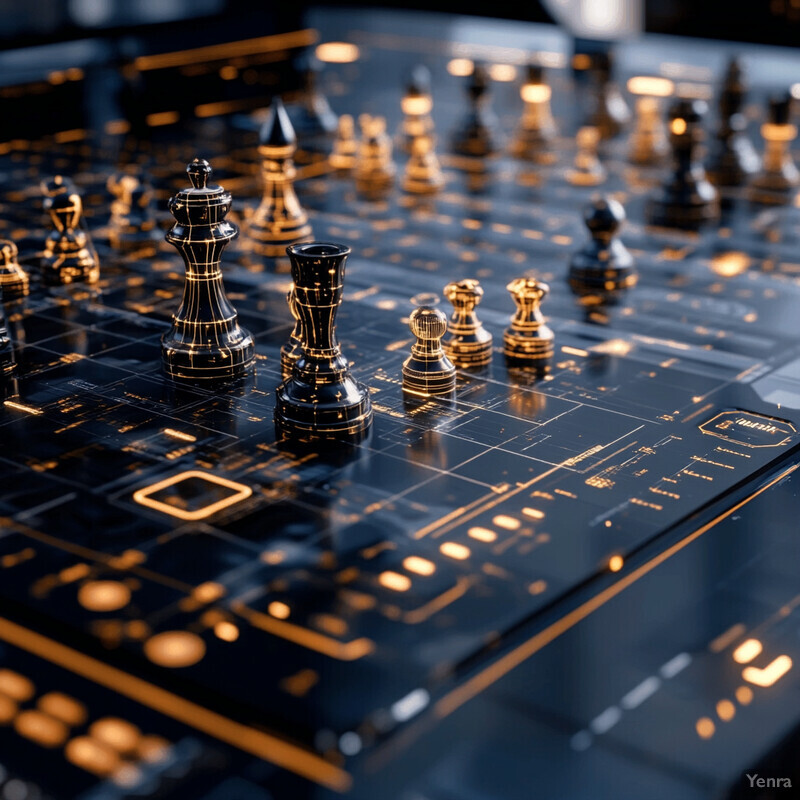
Proof-of-concept studies confirm RL’s potential. Bertoin et al. (2023) demonstrated an RL-based interception: they trained an agent to deflect a malicious drone away from its mission in an urban scenario. In their simulation, the RL agent successfully learned maneuvers to intercept a self-navigating delivery drone that had been hijacked. The work showed that deep RL can identify and exploit vulnerabilities in the drone’s anti-collision system. These results suggest RL could be effective in devising automated counter-drone tactics.
Drone Threat Detection Song Lyrics
(Intro)
Scanning the horizon, AI’s got our back
Drones on the radar, we’re staying on track
Twenty ways we’re stepping up, no time to slack
In the digital skies, we’re ready to attack
(Verse 1)
Deep learning eyes see shapes in the dark
Object recognition hitting every mark
In real-time we classify the threat on the fly
Predictive paths traced, drones can’t deny
RF frequencies filtered, no static in the code
Data fusion layers give a full episode
Autonomous interception, we send a reply
With tactics defined by AI supply
(Pre-Chorus)
Behavioral analysis, patterns we decode
Thermal imaging cuts through every shadow road
Anomalies spotted where no eye can see
Edge computing steps in, setting data free
(Chorus)
We got twenty ways to guard these skies
With AI shining through augmented eyes
We’re securing the perimeter, no surprise
A future of safety, watch the drones realize
(Verse 2)
Acoustic signatures reveal stealthy wings
Adaptive models learn as the data sings
Computer vision peels back natural disguise
Swarms detected as formation applies
Contextual cues rank the danger ahead
Long-range optics keep the fleet in our thread
Deep reinforcement refines our game
Automated response aligns our aim
(Pre-Chorus)
Vulnerability mapped with data at the helm
Augmented reality shows the whole realm
From the code to the field, we’re standing tall
With AI as our shield, we answer the call
(Chorus)
We got twenty ways to guard these skies
With AI shining through augmented eyes
We’re securing the perimeter, no surprise
A future of safety, watch the drones realize
(Bridge)
No threat too distant, no craft too small
Our systems evolve, break down every wall
From new designs to cunning stealthy art
These twenty ways tear deception apart
(Outro)
As the world spins on, we raise the bar
AI in command, the next-gen star
Drones beware, we’ve changed the game
With twenty methods known by name.